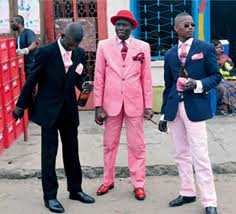Oh,
blanchiment de la peau par des personnes dotant d’une peau noire, fallait
préciser !
On retrouve déjà un certain antagonisme dans l’intitulé.
Comment blanchir sa peau, on connait déjà le comment mais Pourquoi …C’est
ce qui m’a toujours intriguée, pourquoi certains africains, asiatique ou autres
sont aussi accro au produits de blanchiment ?
Est-ce
un complexe d’infériorité vis-à-vis de nos confrères de peau blanche, ce que
j’y crois d’un point de vue totalement personnel. En tout cas cette pratique
m’indigne énormément voir même m’énerve… la diversité existe et existera
toujours, faut juste embrasser cette diversité qui fait la beauté de l’espèce
humaine.
On
est tous différent et unique, la nature a bien fait les choses, donc faut
célébrer cette diversité et non la nier.
Questions
qui me tracassent, j’ai jamais vu de crèmes de ‘’noircissement ‘’de
la peau (à part les crèmes de bronzage) ?!?!? En plus ca se voit quand on
blanchit sa peau et c’est mocheee sans oublier les risques de cancer et brulure
de la peau !
Blanchir la Peau Jusqu'à se
Détruire ! Un Drame Africain...
By Edith
Kitoko, a human rights activist defending the rights of Asian and African
migrants in Lebanon: edithkitoko@hotmail.com
















.jpeg)































